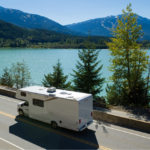Although reviewing insurance policies once a year is recommended, many Americans don’t do it — ever. In fact, according to a study by the Commonwealth Fund, by mid-2022, nearly half of Americans (43%) had inadequate insurance coverage and didn’t know it. And many need help just understanding their policies.
If you’re not sure if your insurance coverage is a good fit, the New Year is a great time to give it a once-over. Even if you don’t end up changing anything, you’ll sleep better in the year ahead knowing you’re covered for whatever comes your way. And hey, you might be able to improve your coverage and snag some extra savings and discounts while you’re at it!
Reasons to do an insurance policy review
Before diving into our policy-specific checklist, let’s take a look at a few compelling reasons to reach out to your Guided Solutions insurance advisor for a policy reassessment:
- You Tied the Knot: There are typically several ways that newlyweds can potentially reduce insurance costs, the most common of which is to combine your autos (if you’re a two-car family) under one insurance provider. And if you don’t already live together, at least one renter or homeowner policy can be eliminated. And don’t forget, you might want extra protection for all those wedding gifts you got — and, of course, your wedding bands.
- You Untied the Knot: The opposite of the above is a divorce, which usually rolls out into changes in vehicle ownership and home addresses. You’ll want to inform your insurance agent so they can help you set up new home, auto and — if applicable — life insurance policies.
- You’ve Got Teen Behind The Wheel: Whether your teenager just got a permit or has already passed the driving test and has their driver’s license, notify your insurance company so they (and you) are fully protected. Ask about applying student-driver discounts and explore multi-vehicle savings if offered.
- You’ve Inherited Stuff: If the stuff you’ve inherited includes valuables like art, antiques, or jewelry, your standard homeowners or renters insurance might not cut it. Ask about personal property endorsements for boosted coverage.
- You’ve Made Home Upgrades: Renovations, remodels, or additions to your home translate to having more space to safeguard — and probably more/different furniture. This includes new structures like a gazebo, shed, pool, or hot tub, too. Your insurance broker can help you make sure your coverage aligns with your improved home value. This includes new structures like a gazebo, shed, pool, or hot tub.
- You’ve Relocated: If you’ve moved to an area that has higher or lower crime rates, you may want to review your insurance coverage to make sure you’re adequately protected. The same goes for car insurance when moving to an area with different traffic patterns. If your new home is located in an area prone to floods or earthquakes, standard homeowners or renters policies won’t cover you. You’ll need to secure insurance for such events, and you should note that this type of coverage typically has a 30-day waiting period before you can make a claim. On the flip side, if you move out of an area that is predisposed to those types of events, you can consider cutting that insurance and save some money.
- You’ve Retired: Retiring often means you spend less time behind the wheel, potentially reducing car insurance costs. Capitalize on discounts for drivers over 55 and further trim those premiums by completing a driver safety course. And, of course, if you downsize, you may need less insurance and should look at a policy that satisfies your smaller space.
Now, let’s look at some tips and informative links for each type of insurance we offer.
Home Insurance: To Protect Your Castle
- Coverage Assessment: Get a new evaluation of your home’s current value. If you’ve made renovations or improvements, make sure your home insurance coverage reflects these changes.
- Natural Disasters: Confirm that your policy covers potential natural disasters prevalent in your region. Whether it’s earthquakes, hurricanes, or wildfires, look to tailor your coverage to the risks specific to your area. Find out what’s covered and what’s not.
Condo Insurance: To Safeguard Your Space
- Personal Property and Structure: Confirm that your condo insurance covers both personal belongings and the physical structure of your unit. Some policies may not cover structural damage, so it’s essential to understand your HOA policies as well.
- Condo Association Changes: Stay updated on any changes in your condo association’s policies that might affect your coverage – like master policy amendments, deductible adjustments, liability requirements, and rules regarding special assessments. You’ll want to adjust your condo insurance accordingly to fill any gaps.
Renters Insurance: To Cover Your Assets
- Displacement Coverage: Ensure that your renters insurance policy provides coverage for temporary living expenses in case you’re displaced due to covered damages — like those brought on by fire — in the apartment complex. Even if your things weren’t affected, you might be denied access due to damage elsewhere on the property.
- Inventory Update: Take stock of your belongings. Have you upgraded your computer or bought a new gaming system or state-of-the-art TV? Have you upgraded your rugs or furniture? Maybe you got a fancy new bike or ski equipment that you keep in the home. If so, you’ll want to update your renters insurance to reflect the current value of your possessions.
Flood Insurance: So You Won’t Get Swept Away
- Risk Assessment: Evaluate your flood risk based on the latest data. RiskFactor is a great source for a top-line query. If you’re in an area prone to flooding, consider purchasing flood insurance.
- Policy Details: Understand the specifics of your flood insurance policy, including what is and isn’t covered. Flood insurance often has specific limitations, often based on your home address, so clarity is critical.
Car Insurance: To Stay Road-Ready
- Driving Style: Has there been a change in how often you use your car and for what purposes? You may be working remotely, and your commuting routine has changed, or if you’re now using your car for business, make sure your auto insurance matches these adjustments. This way, you’re not paying for coverage you don’t need or, more importantly, leaving potential gaps in protection.
- Discounts and Deals: Keep an eye on opportunities to save. Your safe driving habits could qualify you for a lower premium, or your insurance provider may have introduced usage-based discounts. Additionally, bundling home and auto policies could be a smart way to maximize savings.
Boat Insurance: For Smooth Sailing
- Coverage Limits: Check how much protection you’ve got for your watercraft, and if your boat’s value has changed, consider tweaking your boat insurance coverage limits. First, learn what might be covered.
- Consider Modifications Made: If you’ve given your boat a makeover with some serious improvements, remember to let your insurance folks in on the upgrades. Revisit your policy to make sure that if anything happens, you’re covered for the total value.
Motorcycle Insurance: For a Safer Ride
- Coverage Check: Regularly review your motorcycle insurance coverage to make sure it still suits your current riding habits — like how often or where you ride. If you’ve expanded your collection with more bikes, verify that each has adequate coverage.
- Discount Discovery: Stay watchful for potential savings by exploring new discount opportunities. Whether it’s incentives for safe riding, bundling policies, or completing a motorcycle safety course, these efforts can lead to lower premiums, ensuring you ride safely and economically.
Other Vehicle Insurance: If You’re On the Move
- RV Policy Check: Keep tabs on your recreational vehicle liability coverage and physical damage coverage by giving it a once-over at least a month before taking a trip. Make sure your insurance provider covers the personal belongings you have inside, like electronics, furniture, clothing, bicycles, surfboards and other valuables. We can help you determine how much protection you need.
- Golf Cart Coverage: Ensure your golf cart insurance isn’t just tailored for the green. If you’re taking it off the premises, like driving it home or using it on roads around your community, check the policy fine print to be sure you’re fully protected where you need to use it and don’t use it where you’re not protected.
Business Insurance: To Protect Your Investment
- Safeguarding Your Assets: Take a moment to inspect the details of your business insurance, focusing on both property and liability coverage. It’s not just about having insurance; it’s about making sure it keeps up with the growth of your business. If you’ve expanded your operation, double-check that your coverage is expansive enough to protect your investment.
- Coverage Beyond the Basics: Elevate your business protection by considering additional coverage options. Whether it’s business interruption insurance for those unexpected hiccups or cyber liability insurance to shield against digital threats, tailoring your coverage to the evolving needs of your business ensures a comprehensive safety net.
Life Insurance: To Secure Your Loved Ones
- Life Changes: Take a moment to revisit your life insurance coverage when life takes unexpected turns. Whether you’re saying “I do,” welcoming a new bundle of joy or experiencing a change in income, life changes can impact the adequacy of your coverage. And you’re never too young to consider life insurance.
- Beneficiary and Policy Updates: Beyond life’s major events, don’t forget the nitty-gritty details. Confirm that your beneficiaries are accurately accounted for and that your life insurance paperwork reflects your current circumstances.
Medicare: Because Health Matters
- Plan Review: Read over your Medicare plan annually. Health needs can change, and your plan should be flexible enough to keep up, so ask yourself if your Medicare choices are still ticking all the health boxes and covering what you need. Here’s what you should know.
- Supplemental Coverage: Don’t stop at the basics — consider exploring supplemental coverage. Whether it’s a Medigap policy or a Medicare Advantage plan, these options can fill in the gaps and add an extra layer of protection to your healthcare.
By addressing all the above points in our insurance checklist, you’ll be well-prepared for the New Year, ensuring that your coverage aligns with your current circumstances and needs — and whatever 2024 has in store!









